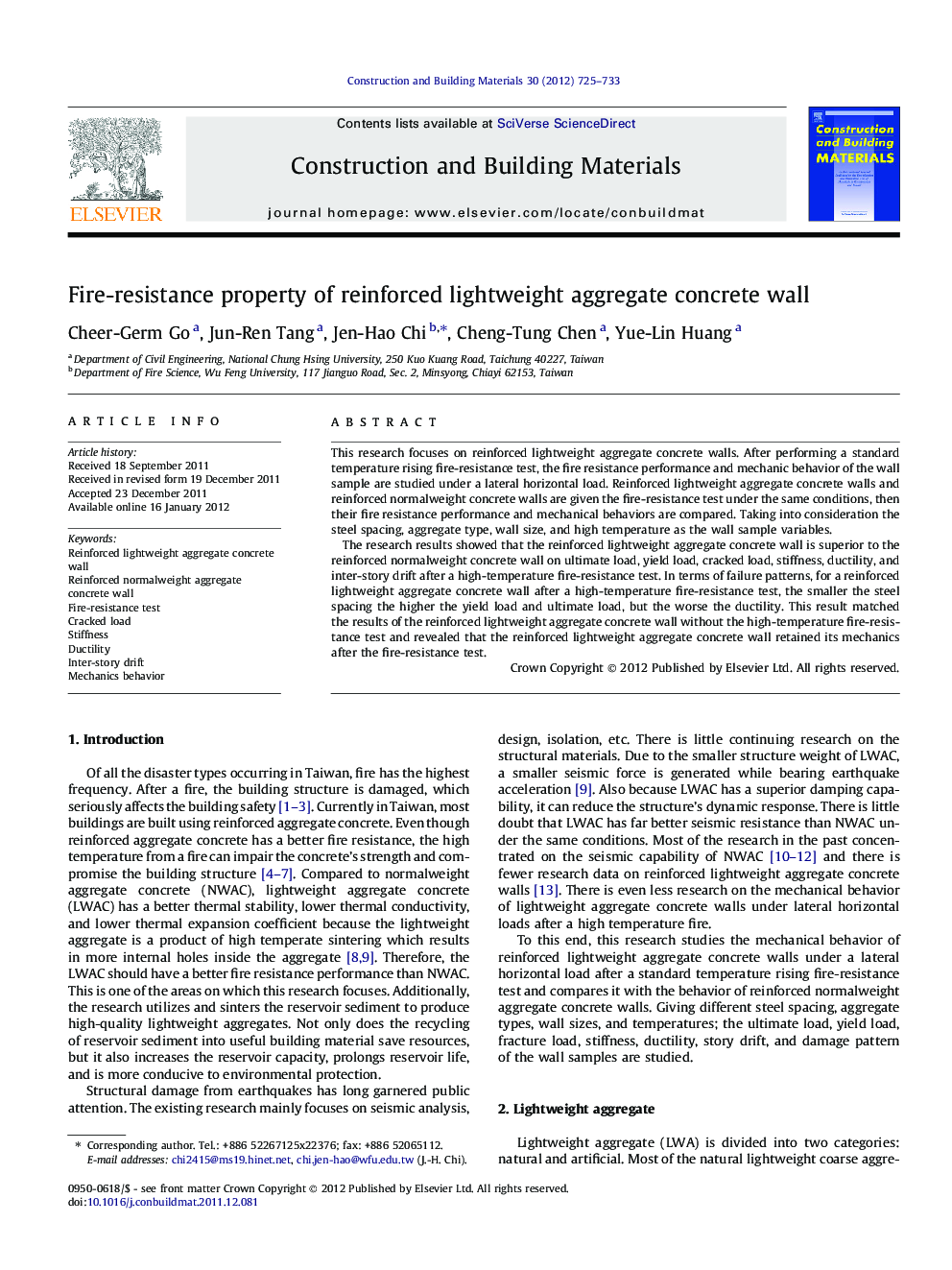| Article ID | Journal | Published Year | Pages | File Type |
|---|---|---|---|---|
| 258575 | Construction and Building Materials | 2012 | 9 Pages |
This research focuses on reinforced lightweight aggregate concrete walls. After performing a standard temperature rising fire-resistance test, the fire resistance performance and mechanic behavior of the wall sample are studied under a lateral horizontal load. Reinforced lightweight aggregate concrete walls and reinforced normalweight concrete walls are given the fire-resistance test under the same conditions, then their fire resistance performance and mechanical behaviors are compared. Taking into consideration the steel spacing, aggregate type, wall size, and high temperature as the wall sample variables.The research results showed that the reinforced lightweight aggregate concrete wall is superior to the reinforced normalweight concrete wall on ultimate load, yield load, cracked load, stiffness, ductility, and inter-story drift after a high-temperature fire-resistance test. In terms of failure patterns, for a reinforced lightweight aggregate concrete wall after a high-temperature fire-resistance test, the smaller the steel spacing the higher the yield load and ultimate load, but the worse the ductility. This result matched the results of the reinforced lightweight aggregate concrete wall without the high-temperature fire-resistance test and revealed that the reinforced lightweight aggregate concrete wall retained its mechanics after the fire-resistance test.
► Reinforced walls using lightweight and normalweight concrete are compared. ► Reinforced lightweight concrete wall shows better fire resistance. ► Reinforced lightweight concrete wall behaves well after temperature test. ► The lightweight wall is the compound of the sinters of the reservoir sediment.
